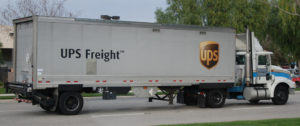At Freight Motion, we have customers who discuss various transportation issues they had in the past. We would like to share one here to raise awareness of underlying issues, market trends, and possible solutions.
What is the difference between parcel and freight?
In general, parcels are boxes shipped and labeled individually. Freight on the other hand would be a collection of boxes shipped on one pallet, moving as a group. We have found recently that many think both operate similarly. In reality, the two are very different in things such as size, transport, time and capacity. Let’s unravel one by one.
Size
Typically, anything shipping with a collective weight over 150 lbs, freight might be a great option. When it is close to 150 lbs., it might actually be less expensive to move freight because it is considered light by freight standards, but heavy by parcel. Also, if it’s a collection of boxes, it’s easier and less likely to get lost shipping 1 large unit rather than 10 separate boxes. You will also have all boxes arrive on the same day instead of the potential three boxes one day, seven the next.
Using one of the parcel carriers as an example, they may have 20 stepvans in a city on any given day. Freight on the other hand, might only have one or two 53 foot trailers or a few 28 foot pup trailers. Why is that? Millions of parcel shipments move every day whereas freight is a very small fraction.
Transport
Parcel Trucks have a daily-calculated route that changes only on rare occasions to maximize fuel and time efficiency. Did you know they rarely, if ever, make left turns? Did you also know companies train their drivers to step in and out of their truck with a specific foot to minimize delay in entry and exit? Because of this and many more data points, they are able to estimate arrival times more accurately. With freight, route’s change daily based on supply and demand, there is also less data making it harder to predict ETA’s.
Time
Time spent loading and unloading pallets is much longer than parcel. A parcel driver dispatched to pick up one box or three boxes takes minimal extra time. Even if it is 10 boxes, it is minimal. On the other hand, a freight driver dispatched to pick up one pallet and come to find out there are three, time is exponentially increased. Thus, a freight driver could not make nearly as many stops in a day as a parcel driver. Since there are not enough hours in the day, shipments are then pushed to the next day for pickup.

Inside of a Freight Truck
Capacity
With freight, there is the issue of having enough room on the truck. With parcel, this is not something that usually occurs. As in the example above, a couple of extra-unexpected parcels will not keep the driver from being able to load everything in the truck. However, a couple of extra pallets could potentially mean there won’t be enough room in the truck for the next stop.
This post is aimed to give the user a better understanding of how Freight operates compared to Parcel. Does it help explain some differences?






It’s really a nice and useful piece of info. I am satisfied that you simply shared this useful info with us. Please stay us informed like this. Thank you for sharing.